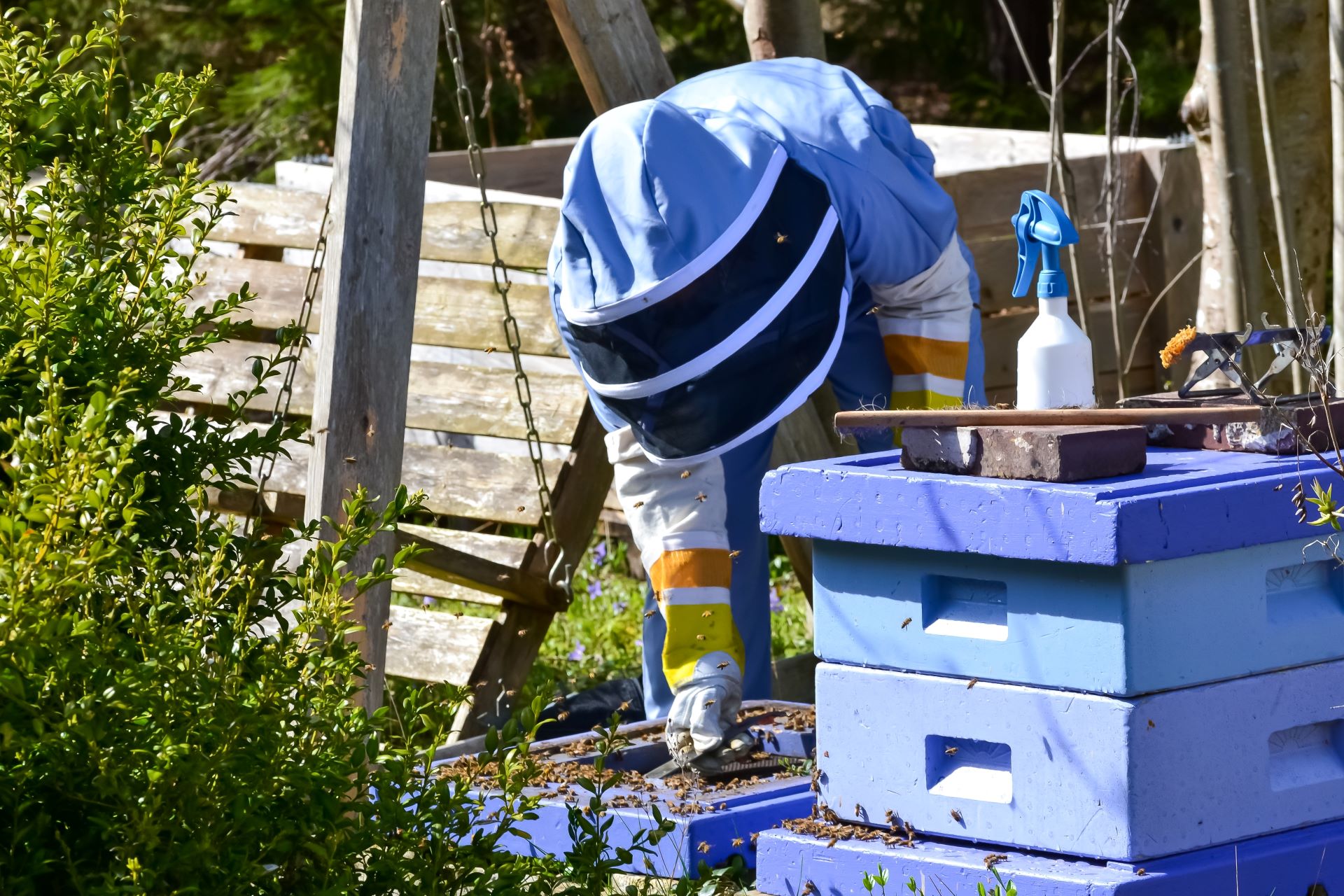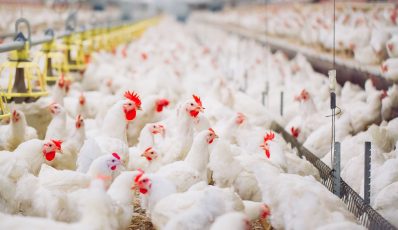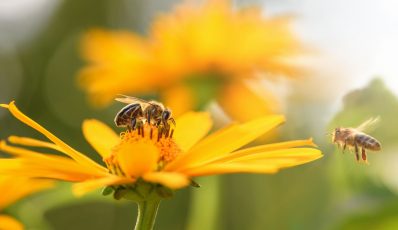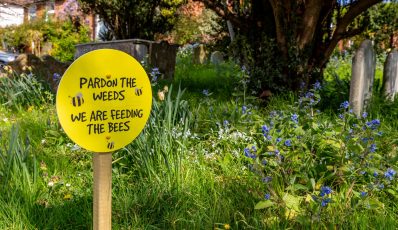A clean hive is the basis for the health and productivity of bees. Regular cleaning and disinfection of hives are key activities that every beekeeper should skillfully carry out to provide his bees with optimal living and working conditions. In this article, we provide a comprehensive guide that will help you properly care for hives made of different materials. Learn how and when to best clean and disinfect your hives to keep your bees healthy and productive all year round!

A clean hive is the basis for the health and productivity of bees. Regular cleaning and disinfection of hives are key activities that every beekeeper should skillfully carry out to provide his bees with optimal living and working conditions. In this article, we provide a comprehensive guide that will help you properly care for hives made of different materials. Learn how and when to best clean and disinfect your hives to keep your bees healthy and productive all year round!
A clean hive means healthy bees!
Cleaning and sterilisation of hives are essential to the health and well-being of bees, which are crucial to ecosystems and food production around the world. Here’s why you should take care of it:
Disease prevention: Hives can harbor various pathogens, including bacteria, viruses, and fungi that can cause bee diseases such as foulbrood. Regular disinfection helps eliminate these risks.
Parasite control: Parasites such as varroa are one of the biggest challenges for beekeepers. Clean and well-sterilised hives limit their spread and provide a healthier environment for bees.
Increasing bee productivity: Clean hives encourage bee activity and greater honey production. Bees that are free from diseases and parasites can collect nectar more efficiently and produce larger amounts of honey.
Detecting early problems: Cleaning hives allows beekeepers to take a closer look at the health of their bees and provides an opportunity to identify potential problems early.
Extending the life of hives: Hives, especially wooden ones, may be damaged by moisture or mold. Regular cleaning and appropriate disinfection help maintain their structure and functionality for longer.
When is the best time to clean and sterilise bee hives?
The timing and frequency of cleaning and sterilising hives can significantly impact the health and productivity of bees. Here are some tips that will help you choose the best time to carry out these activities:
End of harvest season: The best time to deep clean and disinfect your hives is at the end of the harvest season when the bees have finished making honey and are preparing for hibernation. During this time, hives are usually less populated, making thorough cleaning easier.
Before hibernation: Clean hives are crucial for bees to survive the winter. Removing wax residue, dead bees, and possible pathogens before overwintering will provide the beekeeper with healthier colonies in the spring.
Spring: Early spring, just before the start of the new harvest season, is also a good time to clean your hives. Removing any damages will prepare your hives for the new season, providing a clean and fresh environment for your bees.
After the onset of disease: If the hive shows signs of disease, such as foulbrood or parasitic infestations, immediate cleaning, and disinfection are necessary to limit the spread of the problem to other colonies.
Regularly inspect the condition of hives: Beekeepers should regularly inspect the condition of bee hives, at least several times a season, to assess whether additional cleaning is needed. Some situations, such as a build-up of wax residue or dead bees, may require quicker intervention.
The key to effective bee hive hygiene management is maintaining a regular cleaning schedule, adapted to climatic conditions, bee life cycle, and local health risks.
-
Dadant Nuc Box – made of plastic (PP) – for 5 frames 199.00 €
-
Beehive – 2 frames and floor cassette with entrance hole – ventilation holes with metal cover 169.00 €
-
Beehive – plastic (polypropylene) – 54 x 44 cm – with thermal insulation 259.00 €
-
Langenstroth beehive–2 frames and base cassette with entrance hole
Preparation for cleaning hives
Proper preparation of hives will not only make the entire process easier but will also increase its efficiency and safety for both the beekeeper and the bees:
Providing appropriate protective clothing: Before cleaning, the beekeeper should put on a protective uniform, which includes a beekeeping suit, gloves, and a face shield. This clothing should provide protection against stinging, but also against contact with the chemicals used.
Gathering the necessary tools and materials: To clean and disinfect the hives, you will need special tools, such as spatulas for scraping wax, brushes, buckets, as well as disinfectants.
Choosing the right cleaning and disinfecting agents: Beekeepers should only use products that are safe for bees and effective against pathogens. It is worth seeking the opinion of other beekeepers or consultants in this field to choose the most appropriate measures.
Emptying the hive: Before cleaning, you must properly prepare the hive, which means removing the bees, honeycombs, and pollen. This can be done by smoking, which forces the bees to leave the hive, making work easier and reducing stress for the bees.
Planning the right place and time for cleaning: Cleaning is best done on a dry and warm day, which will allow the hive to dry quickly and be ventilated after the process.
Methods of cleaning and disinfection of wooden hives
Wooden hives are popular with beekeepers due to their durability and natural properties, but they require proper care to ensure a safe and hygienic environment for bees. Here are some key methods for cleaning and disinfecting these hives:
Mechanical cleaning
- Removing debris: The first step is to mechanically remove any debris such as old combs, wax buildup, dead bees, and other debris. This can be done using a spatula or a special brush.
- Scraping Wax and Propolis: Wax and propolis can be difficult to remove, so sharper tools are used to scrape these substances from the wood. It is important to do it gently so as not to damage the wood.
Washing and disinfection
- Washing with a soap solution: After mechanical cleaning, the hives can be washed with warm water and a mild detergent (preferably ecological), which will help remove greasy residues and smaller impurities.
- Use of disinfectants: After washing, use a disinfectant that is safe for bees, such as a lime-based solution or specialized disinfectants available in beekeeping stores. The manufacturer’s instructions must be carefully followed.
Drying and inspection after cleaning
- Drying hives: After washing and disinfection, the hive should be dried thoroughly, preferably in the sun, which will help eliminate any remaining microorganisms and prevent the development of mold and fungi.
- Inspection and repairs: Once dry, it is a good idea to inspect the condition of the wood, checking for any damage or signs of decay. If necessary, carry out minor repairs or protect the wood with a protective agent.
Hive protection
- Wood impregnation: To extend the life of wooden hives, you can use natural oils or special impregnants that will protect the wood against moisture and pests while being safe for bees.
-
Beekeeping Starter Kit – 45 pcs – stick chisel – honeycomb wire – tensioner – hive strap – numbers – bucket holder – uncapping tool 75.00 €
-
Queen breeding system – plastic – 483 x 232 x 42 mm 85.00 €
-
Beekeeping Starter Kit – 23 pcs – stick chisel – bee broom – flight hole slider – bee feeder – insect trap 65.00 €
-
Langstroth Honeycomb Frames – groove for centre wall – pine – height 159 mm – 10 pcs. 79.00 €
Maintenance of plastic hives
Hives made of materials such as plastics or styrofoam are becoming more and more popular in due to their lightness, easy maintenance, and resistance to weather conditions. Here’s how to properly care for these types of hives:
Cleaning plastic hives
- Removing dirt: Plastic hives can be easily cleaned with water and mild detergents. Contaminants such as wax and propolis usually come off easily from smooth surfaces.
- Disinfection: To disinfect plastic, you can use alcohol-based solutions or special disinfectants that are safe for bees. It is important to rinse the hives thoroughly after applying any chemicals to avoid leaving any residue that could harm the insects.
Styrofoam hives
- Gentle cleaning: Styrofoam is less resistant to mechanical damage, so when cleaning, use soft brushes and avoid sharp tools that could scratch or damage it.
- Use of appropriate disinfectants: Styrofoam may be sensitive to some chemicals, therefore it is recommended to use disinfectants specially designed for this type of material, which do not contain solvents that may damage the structure of the styrofoam.
Regular inspection and repairs: Although plastics and styrofoam are resistant to many external factors, regular inspection of their condition is important for early detection of possible damage or cracks that may affect the microclimate inside the hive.
UV and weather protection: These materials are water resistant, however, they may degrade when exposed to UV rays. It is therefore worth considering locating the hives in places protected from direct sunlight or using special protective covers.
How to sterilise hives?
Sterilising hives is a key element of maintaining bee health and preventing diseases. There are several disinfection methods that can be used effectively depending on the type of material the hive is made of and the specific needs of the beekeeper:
Lime-based solutions: This is a traditional disinfection method that is effective against many pathogens. Lime bleaching is relatively safe for bees when used properly. To prepare the disinfectant mixture, you can use 1 kg of hydrated lime per 10 liters of water. Mix the mixture thoroughly and apply it to the walls of the hive with a brush.
Acetic acids salts: The use of acetic acid solutions is effective in combating the spores of diseases such as foulbrood. However, this method requires caution to avoid exposing the bees to harmful concentrations of acid. An acetic acid solution can be prepared by mixing 1 part acetic acid with 10 parts water. This method should be used in a well-ventilated area to avoid inhalation of fumes.
Baking soda and water: A solution of baking soda in water can be used for gentle cleaning and disinfection, especially in hives made of sensitive materials such as styrofoam. A mixture of baking soda and water is a mild disinfectant option. It is prepared by dissolving 100 grams of baking soda in 10 liters of warm water. This solution can be used to wash and rinse the inside of the hive.
Alcohol solutions: Alcohol, especially isopropyl alcohol, is effective in removing greasy contaminants and disinfecting. However, alcohol may be aggressive to some materials, such as plastic or styrofoam. You can use a 70% isopropyl alcohol solution by applying it directly to clean the surfaces of the hives using a sprayer or a clean cloth.
Thermal cleaning: High temperature is one of the most effective ways to kill pathogens. Using hot steam to disinfect hives is an environmentally friendly method that does not require the use of chemicals.
Ozone treatment: The use of ozone as a disinfectant is gaining popularity due to its effectiveness and safety for bees. However, ozonation requires specialized equipment and appropriate precautions.
Commercial disinfectants: There are many disinfectants available specifically for use in beekeeping. Always follow the manufacturer’s recommendations to ensure the product is safe for bees and effective against the targeted pathogens.
What should you do after cleaning the hive?
After cleaning and disinfecting, it is important to follow these steps to get your hives back into service and provide your bees with a safe and healthy environment:
Inspection and repair of damage: Once the hives are dry, it is a good idea to carefully inspect each part to make sure there are no damages, cracks, or other structural problems. If necessary, appropriate repairs should be carried out, which may include replacing damaged elements, sealing gaps, or painting wooden surfaces with special protective paints.
Reorganizing and reassembling hives: Once the hives are dry and in good condition, you can begin reassembling and reorganizing internal components such as frames and combs. It is worth making sure that everything is well arranged and stable so that the bees can start their work without any problems.
Reintroducing bees to the hive: Once you have finished cleaning and preparing the hives, you can slowly reintroduce bees. It is important to do this carefully, giving the bees time to acclimatize and adapt to the renewed environment. It is worth observing the bees’ behavior in the first days after reintroduction to make sure that they adapt well to the renovated home.
Monitoring: In the days and weeks following cleaning and colony reintroduction, it is important to regularly monitor the condition of hives and bees’ health. You should pay attention to any signs of stress in the bees, possible problems with diseases or parasites, and the general condition of the hives. Detecting potential problems early can help resolve them quickly.
Sticking to these practices not only helps maintain the apiary in good condition but also contributes to the health and productivity of the bees. Maintaining cleanliness and proper conditions in hives is the basis for success in beekeeping!






Share